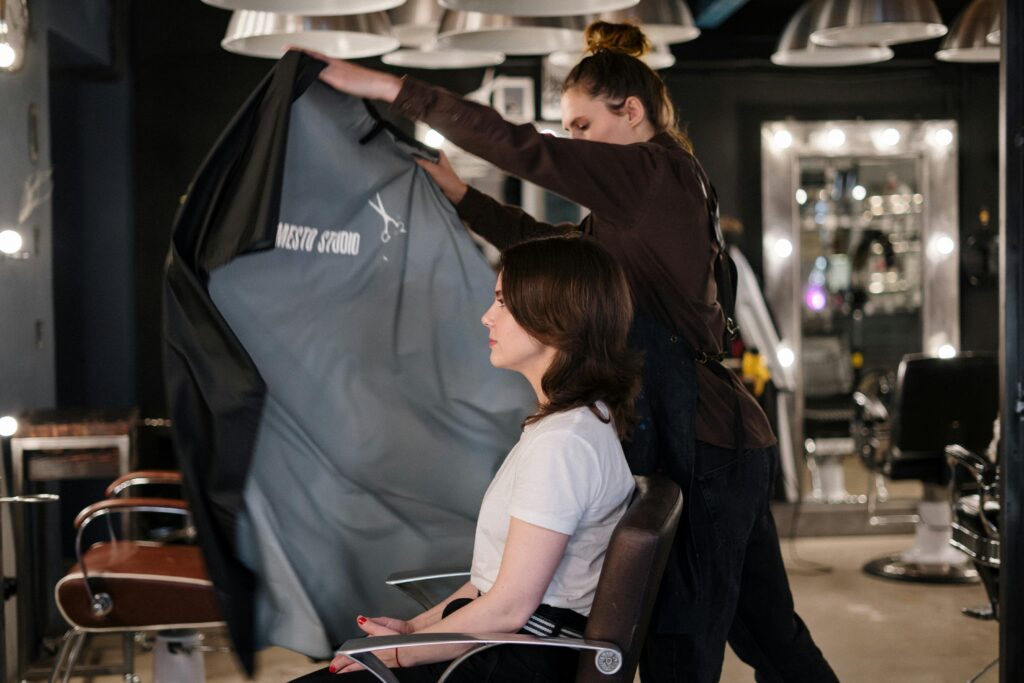Are you an aspiring hairstylist looking to take your skills to the next level? Advanced hair coloring techniques can set you apart in the competitive world of beauty and fashion.
In this comprehensive guide, we will explore the top advanced hair coloring techniques that every professional should master. From balayage to color melting, we will delve into the intricacies of these techniques and provide you with expert tips to elevate your craft.
1. Balayage
Balayage has become one of the most sought-after hair coloring techniques in recent years. This French coloring technique involves hand-painting highlights onto the hair to create a natural, sun-kissed look. Unlike traditional foiling methods, balayage allows for a seamless blend of colors and a soft transition from dark to light.
To master balayage, practice is key. Start by selecting the right tools, such as a good quality lightener and a variety of brushes for different effects. Remember to vary the placement of your highlights to create dimension and depth in the hair.
2. Color Melting
Color melting is a technique that seamlessly blends multiple colors together to create a soft, gradient effect. This technique is perfect for clients who want a low-maintenance hair color that grows out beautifully. To achieve a flawless color melt, start by selecting a color palette that complements the client’s skin tone and features.
Blend the colors together using a brush or your fingers, focusing on creating a smooth transition between each shade. Remember to take your time and blend the colors carefully to avoid any harsh lines or demarcations.
3. Foilyage
Foilyage combines the freehand painting technique of balayage with the precision of foils to create a customized, multi-dimensional hair color. This technique is perfect for clients who want a more dramatic color transformation while still maintaining a natural look.
To master foilyage, section the hair and apply a lightener using a balayage technique. Place foils around the painted sections to create added lift and intensity. This method allows for more control over the lightening process and can help achieve a brighter, bolder color result.
4. Root Smudging
Root smudging is a technique used to soften the contrast between the roots and the rest of the hair color. This technique is perfect for clients who want a low-maintenance hair color that grows out seamlessly. To master root smudging, apply a semi-permanent or demi-permanent color to the roots and blend it downwards into the rest of the hair.
This will create a natural, lived-in look that is easy to maintain between salon visits. Remember to choose a color that matches the client’s natural hair color to achieve a seamless blend.
5. Babylights
Babylights are fine, delicate highlights that mimic the natural hair color of children. This technique is perfect for clients who want a subtle, sun-kissed look that appears effortless. To master babylights, section the hair into small, fine sections and weave in highlights using a fine-tooth comb.
Focus on creating a soft, natural blend of colors that frames the face and enhances the client’s features. Babylights are a great way to add brightness and dimension to the hair without the commitment of traditional highlights.
6. Ombre
Ombre is a hair coloring technique that involves blending two or more colors together to create a seamless transition from dark to light. This technique is perfect for clients who want a bold, high-contrast look that makes a statement. To master ombre, start by selecting a color palette that complements the client’s skin tone and features.
Blend the colors together using a brush or your fingers, focusing on creating a smooth gradient effect. Ombre can be customized to suit any client’s style, from subtle and natural to bold and dramatic.
7. Sombre
Sombre, short for subtle ombre, is a softer, more natural-looking version of the ombre technique. This technique is perfect for clients who want a low-maintenance hair color that grows out beautifully.
To master sombre, focus on creating a soft, gradual transition from dark to light that complements the client’s natural hair color. Blend the colors together using a gentle hand to achieve a subtle, sun-kissed effect. Sombre is a versatile technique that can be customized to suit any client’s style and preferences.
8. Color Blocking
Color blocking is a bold hair coloring technique that involves applying vibrant, block colors to different sections of the hair. This technique is perfect for clients who want a high-impact, fashion-forward look. To master color blocking, section the hair and apply vivid, contrasting colors to create a graphic, modern effect.
This technique allows for endless creativity and customization, making it ideal for clients who want to make a statement with their hair color. Remember to use high-quality, long-lasting hair color products to ensure vibrant results.
9. Reverse Balayage
Reverse balayage is a technique that involves darkening the ends of the hair to create a subtle, lived-in look. This technique is perfect for clients who want to add depth and dimension to their hair color without lightening it.
To master reverse balayage, apply a darker shade to the mid-lengths and ends of the hair, blending it upwards to create a soft, natural effect. This technique can help create the illusion of thicker, fuller hair and is a great option for clients with fine or thinning hair.
10. Smoky Hair
Smoky hair is a cool-toned hair coloring technique that involves blending shades of grey, silver, and charcoal to create a sophisticated, edgy look. This technique is perfect for clients who want a modern, fashion-forward hair color that stands out from the crowd.
To master smoky hair, select a color palette of cool, ashy tones and blend them together to create a seamless, smoky effect. This technique requires precision and attention to detail to achieve a smooth, even blend of colors. Smoky hair is a trendsetting technique that is sure to turn heads and make a statement.
Conclusion
In this guide, we have explored the top advanced hair coloring techniques that every professional hairstylist should master. From balayage to color melting, these techniques offer endless possibilities for creativity and customization.
By honing your skills in these advanced techniques and staying updated on the latest trends and innovations in the beauty industry, you can elevate your craft and stand out in a competitive market
Key Takeaways:
- Advanced hair colorings techniques like balayage, color melting, and foilyage can elevate your hairstyling skills and set you apart in the beauty industry.
- Techniques such as root smudging, babylights, and ombre offer versatile options for creating natural or bold hair color transformations.
- Sombre, color blocking, reverse balayage, and smoky hair techniques cater to various client preferences and style choices.
- Mastering these advanced techniques requires practice, precision, and a keen eye for color blending and placement.
To further enhance your expertise in advanced hair coloring techniques and gain valuable industry insights, consider enrolling in the FIT Beauty Industry Essentials online course and certificate program offered by Yellowbrick.
This comprehensive program can provide you with the knowledge and skills needed to excel in the competitive world of beauty and fashion








